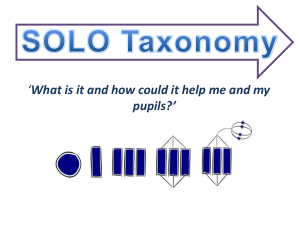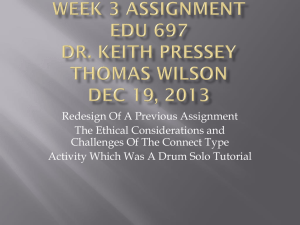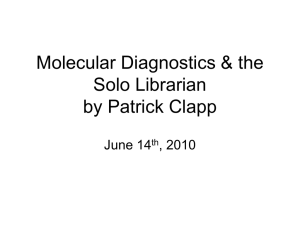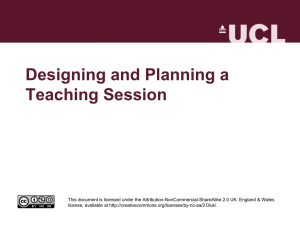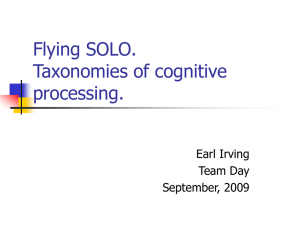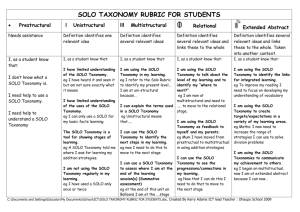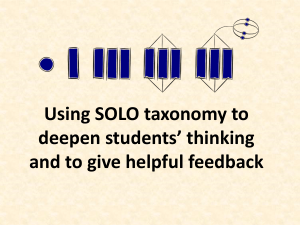SOLO Taxonomy - Belmont Teach
advertisement
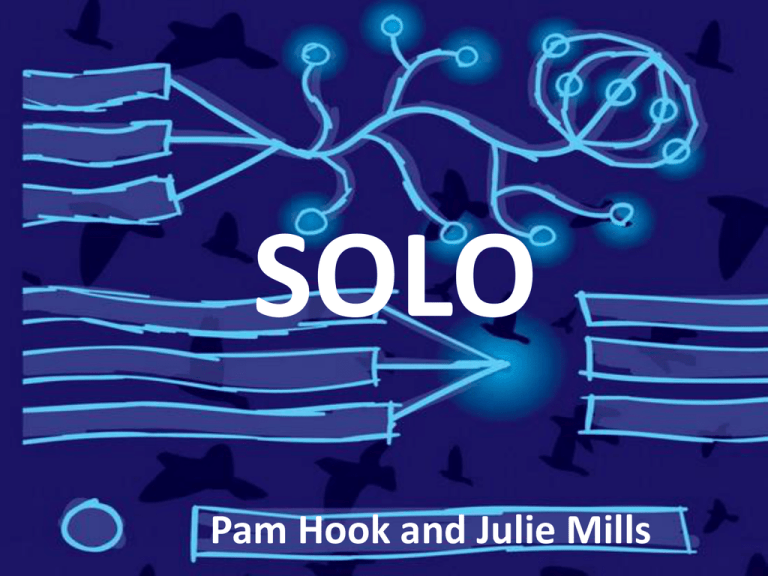
SOLO Pam Hook and Julie Mills Pre-structural Uni-structural Multi-structural Relational Extended Abstract The SOLO levels I’m not sure about… Prestructural I have one relevant idea about… Unistructural I have several ideas about… Multistructural I have several ideas about… …and can relate them to the BIG PICTURE Relational Extended Abstract I have several ideas about… …and can link them to the BIG PICTURE …and can look at these ideas in a new and different way In my classroom I find currently that SOLO provides a great framework for students to progress, where students learning becomes deeper as they move through the levels. We are finding out about photosynthesis. State what photosynthesis is Identify what is needed and produced during photosynthesis. Connect these to produce an equation for photosynthesis. Compare and contrast the processes of osmosis and diffusion. Explain why plants need energy for active transport. Relate the importance of photosynthesis to its functions and predict the consequences of a reduction in photosynthesis on the future of our planet. The SOLO taxonomy & constructive alignment (Deep learning image from Tait Cole. SOLO level verbs and examples Adapted from Pam Hook & Julie Mills: SOLO Taxonomy: A Guide for Schools and using http://issuu.com/pamhook/docs/solotaxonomy__constructivealignment/1) SOLO outcomes followed by some flipped learning, practical work and FAIL Critique of work Students decide success criteria for their redraft. Students decide WGW & EBI http://belmontteach.wordpress.com/ http://juliearyder.wordpress.com/ http://globalsolo.wordpress.com/ Why do I think you should use it? It is excellent for both formative and summative assessment. It makes learning challenging but visible and provides a framework for progression. Its great for finding out what students know before you start and then at any point there after progress can be checked. It is easy to use when planning lessons or a scheme of work as you can scaffold the learning experiences for the outcomes (constructive alignment) at unistructural, multistructural, relational and extended abstract levels. It supports metacognition: what am I doing? – how well is it going? – what should I do next? Challenge can be provided through feedback and feed forward, which could be: teacher to student, student to teacher and student to student. There are a growing number of people out there who are or have tried SOLO. Many are writing or have written about SOLO and are using SOLO in their everyday teaching. I highly recommend the following who have helped and inspired me on my SOLO journey: •Pam Hook – http://pamhook.com/ - SOLO taxonomy a guide for schools pam Hook and Julie Biggs and Tang- Teaching for quality learning at university. (excellent introduction to constructive alignment amongst other things) •Lisa Ashes – http://thelearninggeek.com/ (excellent blogs on a range of topics including SOLO) “SOLO teaches pupils to make relationships between ideas and then use these to question ideas further.” •David Didau – http://www.learningspy.co.uk/solo-taxonomy/ (excellent blogs that are always thought provoking) •Tait Coles – http://taitcoles.wordpress.com/2011/11/12/solo-taxonomy-part-3/ (great blogs and some nice videos of a year 8 class new to SOLO) http://taitcoles.files.wordpress.com/2012/07/ctl_3-2_full_version_2.pdf (great
